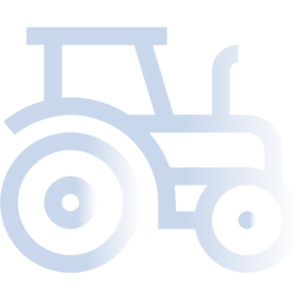The Opportunity
Colombia can become an agricultural powerhouse and generate inclusive and sustainable development by scaling value sharing, export-oriented value chains. It is uniquely positioned to do so because it:
- Features a wide range of climates and soil profiles, making it ideal for cultivating various high-value crops. the geospatial location in the intertropical zone
- Is well situated to supply developed markets such as North America and Europe as it has access to both the Atlantic and Pacific seas.
Despite this potential, Colombia hasn’t been able to exploit this opportunity:
- Agriculture accounts for 8% of Colombia’s $30 billion in annual exports, a small fraction compared to LatAm (Food accounts for 14% of Chile’s exports and 50% of Argentina’s)1.
- Has +27M hectares (the size of West Virginia) with an agricultural vocation that could feed a country the size of the USA (300 million people) but it is only using 7M ha (26%)2.
- 76 million tons of food are wasted per year; of which, 6.1 million correspond to fruits and vegetables, out of which 42% (3,9 M tons) are wasted during agricultural production.
The Challenge
To build sustainable and inclusive value chains that competitively offer export-quality value added products Colombia must ensure that the more 4.7M people that currently live out of the agricultural activity, are part of these value chains. But to achieve this, smallholder farmers must:
- Improve product quality: International markets demand high standards. But smallholder farming in Colombia tends to be targeted towards the domestic market and thus agriculture is done informally and lacks quality standards and required certifications.
- Increase productivity: Colombia faces a productivity lag: it produces $28.6 kUSD /km2 of arable land, while Brazil, Mexico, and the OECD produce per km2 $33.3, $35.5, and $52.9kUSD respectively3.
To improve quality and productivity, smallholder farmers must increase their access to technology, knowledge, land, and finance:
- Technology: Only 5% smallholder farmers have access to farm productive technology. Technology is crucial to increase productivity, decision making, provide traceability and improve the overall quality of the product.
- Knowledge: Smallholder farmers cite the lack of knowledge of sustainable and productive practices as the main reason for agricultural lag. Transfer of technical knowledge is critical for a product to become sophisticated and competitive
- Land: 60% of rural and 15% of urban properties do not have formalized property rights. Legal titling can lead to massive transformations in land markets and attract investors and access to credit.
Finance: 75% of smallholder farmers do not fulfill the conditions to access to a rural credit and only 28% of them have an active financial product. That farmers are part of the financial system is critical for the sustainability of agriculture.
Expected development outcome
Overcoming the challenges that face Colombian sustainable and inclusive agriculture can bring significant social and environmental benefits:
- Improve the economic wellbeing of individuals, because of the increased sustainable economic opportunities, created that not only lead to better incomes but improve the access to financial services, services and education.
- Increase food security not only as an improvement of productivity and markets but as the result of waste and food losses reduction along production and supply chains, including post-harvest losses, thanks to the use of better practices and technology.
- Generate a positive environmental impact by achieving better land use management through the implementation of sustainable management practices and promote the conservation of natural resources by creating nature-based solutions.
Enabling Factors
We believe that in Colombia there is the right environment for agricultural value chains to thrive:
- An open economy: In addition to being a founding member of the Pacific Alliance, the country has entered into multilateral agreements with major agricultural importers such as the US and the EU.
- Access to land: Land legalization has been at the center of UPRA, a government rural planning organization that has made significant improvements to land tenure and registration, improving the integration of 40% of the land into the legal framework.
- Investment in infrastructure: The ministry of technology and telco is leading a project to expand broadband coverage to +3,600 localities in the country, which will not only reduce the digital gap but also improve the quality of life of the population.
- Tailored credit lines: The National Commission of Agricultural Credit (ministry of agriculture) along with Finagro and allies, approved new credit lines to strengthen competitiveness and associativity in agricultural value chain schemes.
Obstacles to Scale
- Lack of basic infrastructure: Despite the significant advances in infrastructure, in many remote rural locations strong, reliable internet connectivity is not available which makes implementation of digital farming remain problematic.
- Technological adoption: Getting farmers thoroughly acquainted with the concept of smart farming, it, is of the utmost importance before they can proceed with the implementation
- Access to productive assets: Access to new credit lines and productivity gains is still hampered by access to productive assets such as land.
What is Amplo Doing
- Supporting agricultural-based companies Investigating markets and the best ways in which particular agricultural value chains can take advantage of growing markets (market positioning) [Naidiseros del Pacífico; Chocolate Colombia]
- Developing business plans, financial models and formulating sustainable projects that advance inclusive and sustainable agriculture models and promote better land use management and natural resource protection [Alquería; CorpoCampo]
- Promoting the catalyzation of private and public investments into sustainable and inclusive projects [Alquería; CorpoCampo; LohasBeans; Heincke; DelAlba]
- Mapping existing financing instruments and investment opportunities to improve matchmaking, identify financing readiness gaps and catalyze private and public investment [UnWomen; UNDP; SEAF]
- BloombergQuint (2017) – Much of Colombian agriculture is characterized by low levels of technology. Accessed Nov. 26 – Learn more
- MinAgricultura (2016) – Estrategia de Agricultura y Desarrollo Rural. Accesado Mayo 30 2020. – Learn more
- Consejo Privado de Competitividad (2018) – Informe Nacional de Competitividad (2018-2019); Accesado Mayo 30 2020.
Other Industries
Our Team
We work hand-in-hand with our clients to develop and IMPLEMENT solutions that create inclusive and sustainable solutions for complex social and environmental challenges








